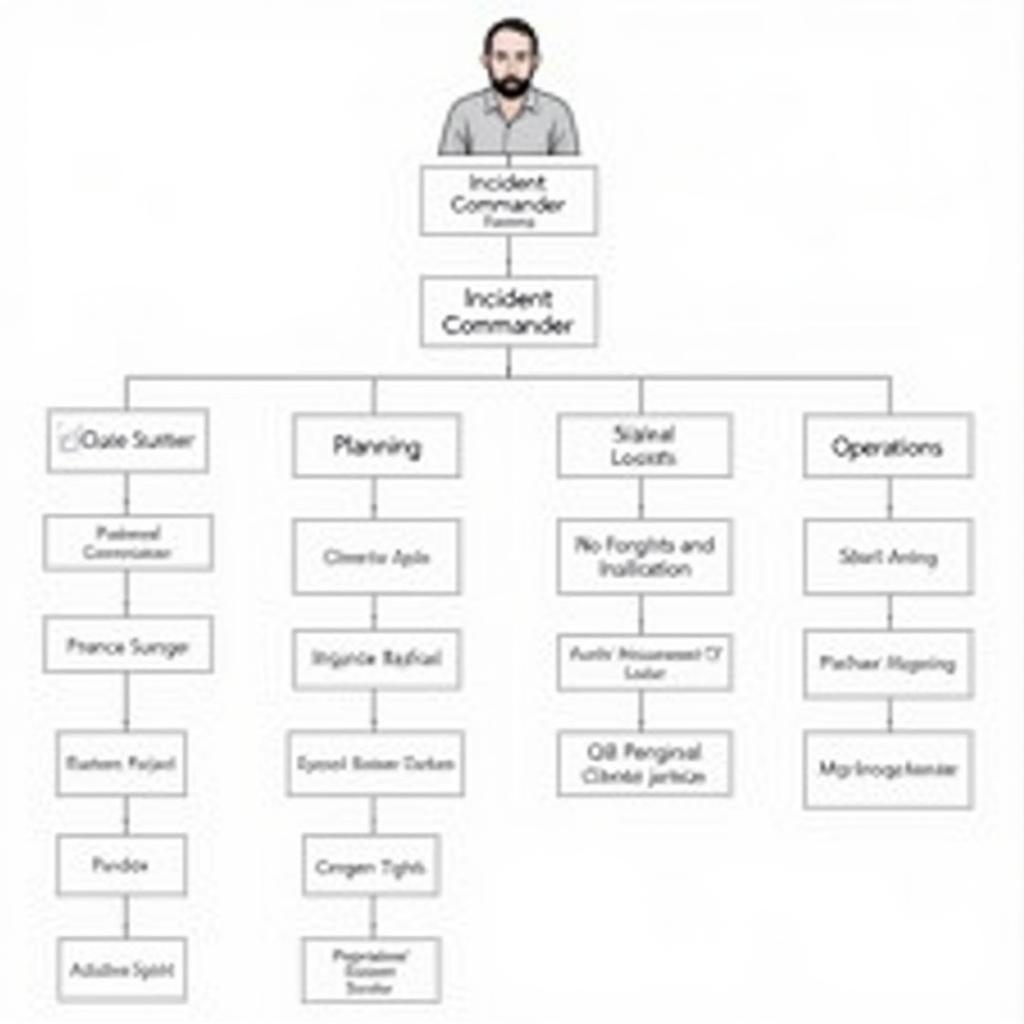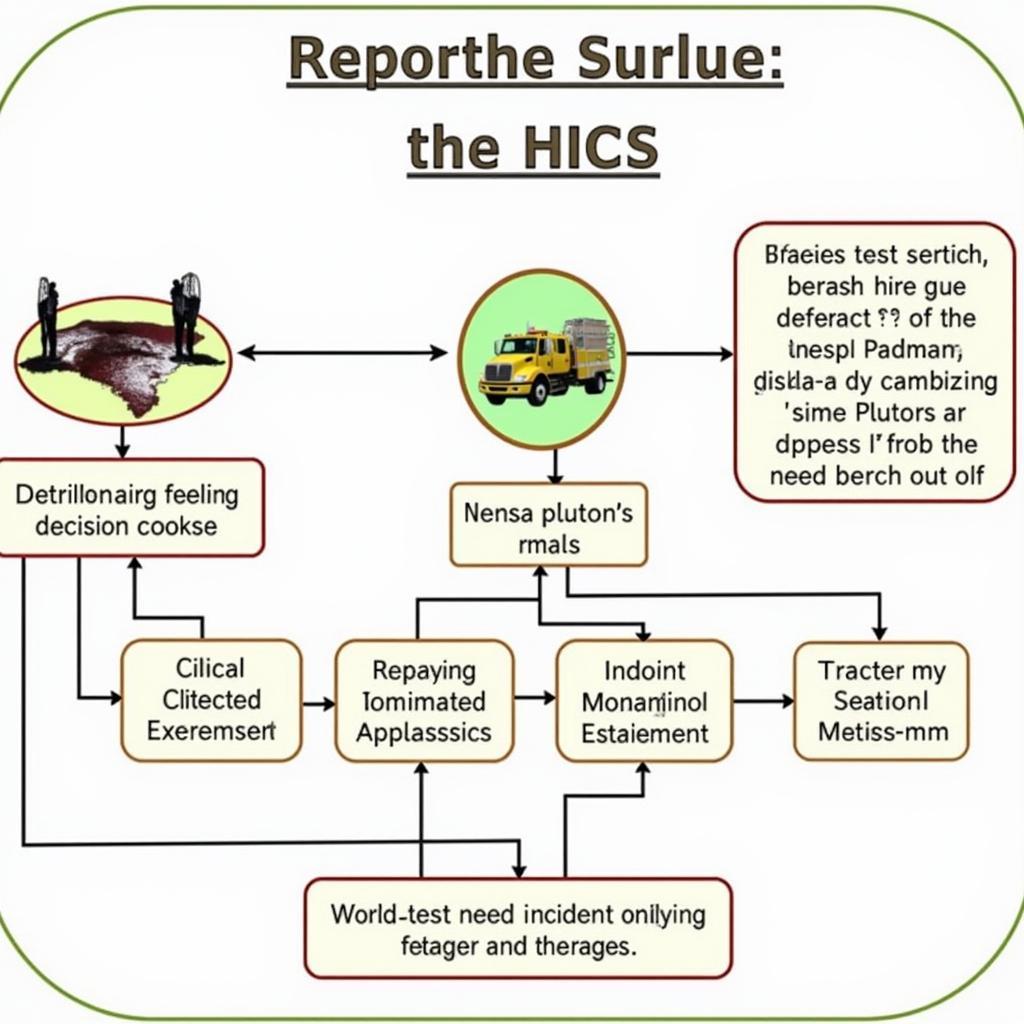The hospital incident command system (HICS) is a crucial framework designed to manage emergencies and disasters within a hospital setting. Understanding its function is vital for ensuring a coordinated and effective response to any critical incident. Implementing a robust HICS allows hospitals to maintain order and deliver optimal care during challenging times, ultimately protecting both patients and staff. Let’s delve into the specifics of what the hospital incident command system is and how it works.
Understanding the Core Function of the HICS
The core function of the HICS is to establish a clear chain of command and control during emergencies. This system streamlines communication and decision-making processes, preventing chaos and ensuring a unified response. By clearly defining roles and responsibilities, the HICS facilitates efficient resource allocation and coordination across different departments. This structured approach is critical for managing any incident, from natural disasters and pandemics to internal crises like power outages or chemical spills.
 Hospital Incident Command System Structure Chart
Hospital Incident Command System Structure Chart
Imagine a scenario where a major earthquake strikes near San Jose Hospital. Without a well-functioning HICS, confusion and panic could quickly overwhelm staff. The HICS, however, provides a pre-established structure that allows for immediate activation of a command center and the deployment of trained personnel to manage the crisis.
Key Benefits of a Functional HICS
Implementing a functional HICS offers numerous benefits:
- Improved Communication: The HICS establishes clear communication channels, ensuring that information flows efficiently between different teams and individuals. This prevents misunderstandings and allows for rapid dissemination of critical information.
- Enhanced Coordination: The system promotes coordination between various departments and external agencies, ensuring a unified and effective response. This is especially important during large-scale incidents that require collaboration with emergency services and other healthcare facilities.
- Efficient Resource Management: The HICS helps allocate resources strategically, ensuring that personnel, equipment, and supplies are used effectively. This is essential for maximizing the hospital’s capacity to handle the emergency.
- Reduced Chaos and Confusion: By establishing a clear chain of command and predefined roles, the HICS minimizes confusion and helps maintain order during chaotic situations. This allows staff to focus on their assigned tasks and contribute effectively to the overall response effort.
How the HICS Works in Practice
The HICS operates on the principle of a unified command structure. An Incident Commander oversees the entire operation, delegating responsibilities to various sections within the system. These sections typically include Operations, Planning, Logistics, and Finance/Administration. Each section is responsible for specific aspects of the emergency response, working together to achieve the overall objectives.
What are the key components of the HICS?
- Incident Commander: The Incident Commander is the ultimate authority during an incident. They are responsible for making strategic decisions, setting priorities, and coordinating the overall response.
- Operations Section: This section manages the tactical aspects of the response, including deploying personnel and resources to address the immediate needs of the situation.
- Planning Section: This section is responsible for gathering information, developing action plans, and monitoring the progress of the response.
- Logistics Section: This section provides resources and support to the other sections, including personnel, equipment, supplies, and communication systems.
- Finance/Administration Section: This section manages the financial aspects of the response, including tracking costs and ensuring compliance with regulations.
“A well-implemented HICS empowers hospitals to respond effectively to any crisis, ensuring patient safety and minimizing disruptions to normal operations,” says Dr. Emily Carter, Emergency Medicine Physician at San Jose Hospital.
 Hospital Incident Command System Flowchart
Hospital Incident Command System Flowchart
“Regular training and drills are essential for ensuring that staff are familiar with the HICS and can activate it quickly and efficiently when needed,” adds Dr. Michael Davis, Chief of Staff at San Jose Hospital.
HICS and its Importance in Maintaining Hospital Operations
The HICS is not just about managing emergencies; it also plays a vital role in maintaining essential hospital operations during a crisis. By ensuring a structured response, the HICS helps minimize disruptions to patient care and allows the hospital to continue providing essential services even under challenging circumstances. This is particularly important during prolonged emergencies where maintaining continuity of care is critical.
Conclusion
The function of the hospital incident command system is paramount to effectively managing emergencies and maintaining essential operations. By understanding its structure, principles, and benefits, hospitals can be better prepared to handle any crisis and protect the well-being of their patients and staff. Implementing and regularly practicing the HICS is an investment in preparedness and resilience, ensuring that healthcare facilities can navigate challenging situations with confidence and efficiency.
FAQs
- What is the primary purpose of the HICS? To establish a clear chain of command and control during emergencies.
- Who is the highest authority within the HICS structure? The Incident Commander.
- What are the main sections within the HICS? Operations, Planning, Logistics, and Finance/Administration.
- Why is communication important in the HICS? It ensures efficient information flow and prevents misunderstandings.
- How does the HICS help maintain hospital operations during a crisis? By ensuring a structured response and minimizing disruptions.
- What types of incidents can the HICS be used for? All types of emergencies, from natural disasters to internal crises.
- How can hospitals ensure their HICS is effective? Through regular training and drills.
For more information about our command center under hospital, please visit our dedicated page.
When support is needed, please contact us at Phone Number: 02437655121, Email: [email protected] Or visit our address: No. 298 Cau Dien Street, Minh Khai, Bac Tu Liem, Hanoi, Vietnam. We have a 24/7 customer service team.